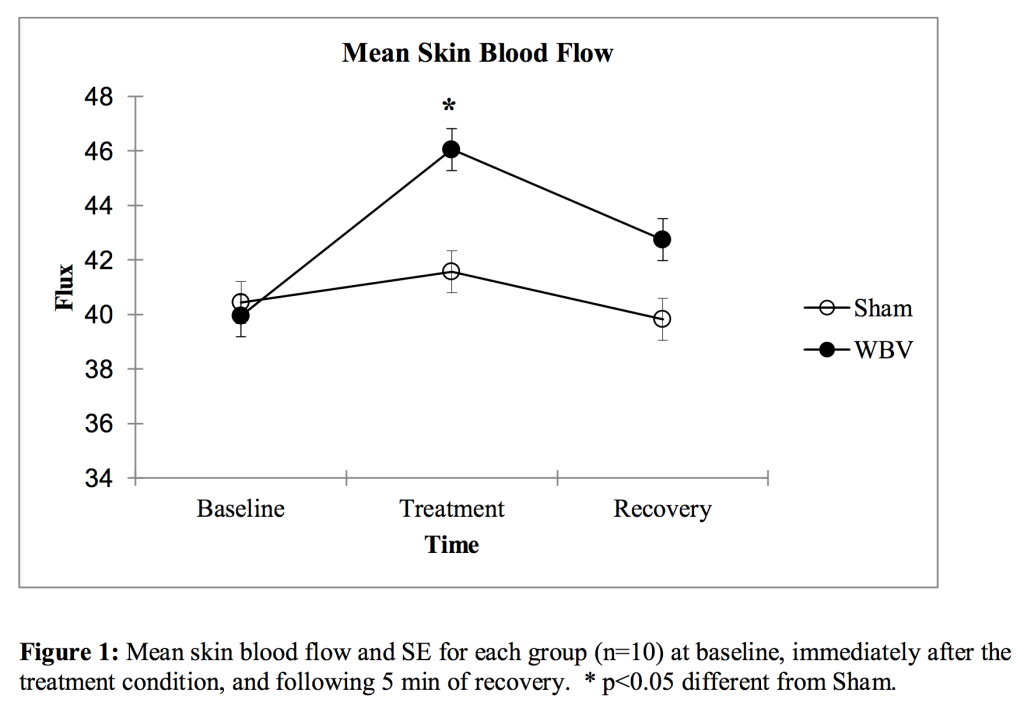J Diabetes Sci Technol. 2014 Jul;8(4):889-94. doi: 10.1177/1932296814536289. Epub 2014 May 21
The Effect of Whole Body Vibration on Skin Blood Flow and Nitric Oxide Production
Paula K. Johnson, MS; J. Brent Feland, PT, PhD; A. Wayne Johnson, PT, PhD; Gary W. Mack, PhD; Ulrike H. Mitchell, PT, PhD
Department of Exercise Sciences Brigham Young University, Provo, UT
Abstract
Background: Vascular dysfunction due to hyperglycemia in individuals with diabetes is a
factor contributing to distal symmetric polyneuropathy (DSP). Reactive oxygen species (ROS)
reduce the bioavailability of nitric oxide (NO), a powerful vasodilator, resulting in reduced
circulation and nerve ischemia. Increases in blood NO concentrations and circulation have been
attributed to whole body vibration (WBV).
The purpose of this study was to the determine the effects of low frequency, low amplitude WBV on whole blood NO concentration and skin blood flow (SBF) in individuals with symptoms of DSP.
Research Design and Methods: Ten subjects with diabetes and impaired sensory
perception in the lower limbs participated in this cross-over study. Each submitted to two
treatment conditions, WBV and sham, with a one week washout period between. Blood draws
for NO analysis and Doppler laser image scans of SBF were performed before, immediately after and following a 5 minute recovery of each the treatments.
Results: Low frequency, low amplitude WBV vibration significantly increased skin blood
flow compared to the sham condition (F2,18=5.82, p=0.0115). Whole blood nitric oxide
concentrations did not differ between the WBV and sham condition immediately or 5 minutes
post-treatment (F2,18=1.88, p=0.1813)
Conclusions: These findings demonstrate that subjects with diabetes respond to whole
body vibration with increased skin blood flow compared to sham condition. The implication is
that WBV is a potential non-pharmacological therapy for neurovascular complications of
diabetes.

